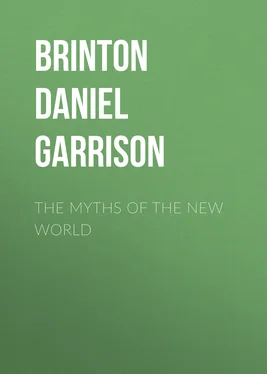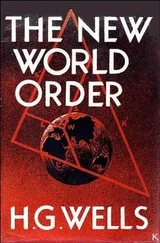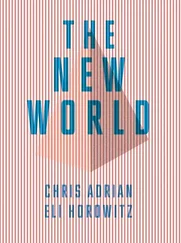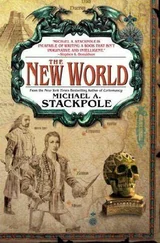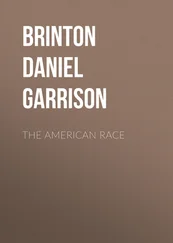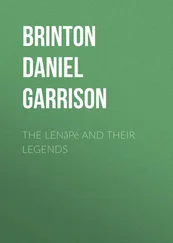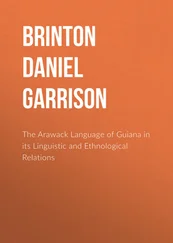Daniel Brinton - The Myths of the New World
Здесь есть возможность читать онлайн «Daniel Brinton - The Myths of the New World» — ознакомительный отрывок электронной книги совершенно бесплатно, а после прочтения отрывка купить полную версию. В некоторых случаях можно слушать аудио, скачать через торрент в формате fb2 и присутствует краткое содержание. Жанр: foreign_prose, История, Старинная литература, Мифы. Легенды. Эпос, foreign_edu, foreign_antique, на английском языке. Описание произведения, (предисловие) а так же отзывы посетителей доступны на портале библиотеки ЛибКат.
- Название:The Myths of the New World
- Автор:
- Жанр:
- Год:неизвестен
- ISBN:нет данных
- Рейтинг книги:5 / 5. Голосов: 1
-
Избранное:Добавить в избранное
- Отзывы:
-
Ваша оценка:
- 100
- 1
- 2
- 3
- 4
- 5
The Myths of the New World: краткое содержание, описание и аннотация
Предлагаем к чтению аннотацию, описание, краткое содержание или предисловие (зависит от того, что написал сам автор книги «The Myths of the New World»). Если вы не нашли необходимую информацию о книге — напишите в комментариях, мы постараемся отыскать её.
The Myths of the New World — читать онлайн ознакомительный отрывок
Ниже представлен текст книги, разбитый по страницам. Система сохранения места последней прочитанной страницы, позволяет с удобством читать онлайн бесплатно книгу «The Myths of the New World», без необходимости каждый раз заново искать на чём Вы остановились. Поставьте закладку, и сможете в любой момент перейти на страницу, на которой закончили чтение.
Интервал:
Закладка:
The cranial forms of the American aborigines have by some been supposed to present anomalies distinguishing their race from all others, and even its chief families from one another. This, too, falls to the ground before a rigid analysis. The last word of craniology, which at one time promised to revolutionize ethnology and even history, is that no one form of the skull is peculiar to the natives of the New World; that in the same linguistic family one glides into another by imperceptible degrees; and that there is as much diversity, and the same diversity among them in this respect as among the races of the Old Continent. 28 28 The two best authorities are Daniel Wilson, The American Cranial Type , in Ann. Rep. of the Smithson. Inst. , 1862, p. 240, and J. A. Meigs, Cranial Forms of the Amer. Aborigs. : Phila. 1866. They accord in the views expressed in the text and in the rejection of those advocated by Dr. S. G. Morton in the Crania Americana.
Peculiarities of structure, though they may pass as general truths, offer no firm foundation whereon to construct a scientific ethnology. Anatomy shows nothing unique in the Indian, nothing demanding for its development any special antiquity, still less an original diversity of type.
On the other hand, the remains of primeval art and the impress he made upon nature bespeak for man a residence in the New World coeval with the most distant events of history. By remains of art I do not so much refer to those desolate palaces which crumble forgotten in the gloom of tropical woods, nor even the enormous earthworks of the Mississippi valley covered with the mould of generations of forest trees, but rather to the humbler and less deceptive relics of his kitchens and his hunts. On the Atlantic coast one often sees the refuse of Indian villages, where generation after generation have passed their summers in fishing, and left the bones, shells, and charcoal as their only epitaph. How many such summers would it require for one or two hundred people to thus gradually accumulate a mound of offal eight or ten feet high and a hundred yards across, as is common enough? How many generations to heap up that at the mouth of the Altamaha River, examined and pronounced exclusively of this origin by Sir Charles Lyell, 29 29 Second Visit to the United States , i. p. 252.
which is about this height, and covers ten acres of ground? Those who, like myself, have tramped over many a ploughed field in search of arrow-heads must have sometimes been amazed at the numbers which are sown over the face of our country, betokening a most prolonged possession of the soil by their makers. For a hunting population is always sparse, and the collector finds only those arrow-heads which lie upon the surface.
Still more forcibly does nature herself bear witness to this antiquity of possession. Botanists declare that a very lengthy course of cultivation is required so to alter the form of a plant that it can no longer be identified with the wild species; and still more protracted must be the artificial propagation for it to lose its power of independent life, and to rely wholly on man to preserve it from extinction. Now this is precisely the condition of the maize, tobacco, cotton, quinoa, and mandioca plants, and of that species of palm called by botanists the Gulielma speciosa ; all have been cultivated from immemorial time by the aborigines of America, and, except cotton, by no other race; all no longer are to be identified with any known wild species; several are sure to perish unless fostered by human care. 30 30 Martius, Von dem Rechtzustande unter den Ureinwohnern Brasiliens , p. 80: Muenchen, 1832; recently republished in his Beiträge zur Ethnographie und Sprachenkunde Amerika’s : Leipzig, 1867.
What numberless ages does this suggest? How many centuries elapsed ere man thought of cultivating Indian corn? How many more ere it had spread over nearly a hundred degrees of latitude, and lost all semblance to its original form? Who has the temerity to answer these questions? The judicious thinker will perceive in them satisfactory reasons for dropping once for all the vexed inquiry, “how America was peopled,” and will smile at its imaginary solutions, whether they suggest Jews, Japanese, or, as the latest theory is, Egyptians.
While these and other considerations testify forcibly to that isolation I have already mentioned, they are almost equally positive for an extensive intercourse in very distant ages between the great families of the race, and for a prevalent unity of mental type, or perhaps they hint at a still visible oneness of descent. In their stage of culture, the maize, cotton, and tobacco could hardly have spread so widely by commerce alone. Then there are verbal similarities running through wide families of languages which, in the words of Professor Buschmann, are “calculated to fill us with bewildering amazement,” 31 31 Athapaskische Sprachstamm , p. 164: Berlin, 1856.
some of which will hereafter be pointed out; and lastly, passing to the psychological constitution of the race, we may quote the words of a sharp-sighted naturalist, whose monograph on one of its tribes is unsurpassed for profound reflections: “Not only do all the primitive inhabitants of America stand on one scale of related culture, but that mental condition of all in which humanity chiefly mirrors itself, to wit, their religious and moral consciousness, this source of all other inner and outer conditions, is one with all, however diverse the natural influences under which they live.” 32 32 Martius, Von dem Rechtzustande unter den Ureinwohnern Brasiliens , p. 77.
Penetrated with the truth of these views, all artificial divisions into tropical or temperate, civilized or barbarous, will in the present work, so far as possible, be avoided, and the race will be studied as a unit, its religion as the development of ideas common to all its members, and its myths as the garb thrown around these ideas by imaginations more or less fertile, but seeking everywhere to embody the same notions.
As the subject of American mythology is a new one to most readers, and as in its discussion everything depends on a careful selection of authorities, it is well at the outset to review very briefly what has already been written upon it, and to assign the relative amount of weight that in the following pages will be given to the works most frequently quoted. The conclusions I have arrived at are so different from those who have previously touched upon the topic that such a step seems doubly advisable.
The first who undertook a philosophical survey of American religions was Dr. Samuel Farmer Jarvis, in 1819 (A Discourse on the Religion of the Indian Tribes of North America, Collections of the New York Historical Society, vol. iii., New York, 1821). He confined himself to the tribes north of Mexico, a difficult portion of the field, and at that time not very well known. The notion of a state of primitive civilization prevented Dr. Jarvis from forming any correct estimate of the native religions, as it led him to look upon them as deteriorations from purer faiths instead of developments. Thus he speaks of them as having “departed less than among any other nation from the form of primeval truth,” and also mentions their “wonderful uniformity” (pp. 219, 221).
The well-known American ethnologist, Mr. E. G. Squier, has also published a work on the subject, of wider scope than its title indicates (The Serpent Symbol in America, New York, 1851). Though written in a much more liberal spirit than the preceding, it is wholly in the interests of one school of mythology, and it the rather shallow physical one, so fashionable in Europe half a century ago. Thus, with a sweeping generalization, he says, “The religions or superstitions of the American nations, however different they may appear to the superficial glance, are rudimentally the same, and are only modifications of that primitive system which under its physical aspect has been denominated Sun or Fire worship” (p. 111). With this he combines the favorite and (may I add?) characteristic French doctrine, that the chief topic of mythology is the adoration of the generative power, and to rescue such views from their materializing tendencies, imagines to counterbalance them a clear, universal monotheism. “We claim to have shown,” he says (p. 154), “that the grand conception of a Supreme Unity and the doctrine of the reciprocal principles existed in America in a well defined and clearly recognized form;” and elsewhere that “the monotheistic idea stands out clearly in all the religions of America” (p. 151).
Читать дальшеИнтервал:
Закладка:
Похожие книги на «The Myths of the New World»
Представляем Вашему вниманию похожие книги на «The Myths of the New World» списком для выбора. Мы отобрали схожую по названию и смыслу литературу в надежде предоставить читателям больше вариантов отыскать новые, интересные, ещё непрочитанные произведения.
Обсуждение, отзывы о книге «The Myths of the New World» и просто собственные мнения читателей. Оставьте ваши комментарии, напишите, что Вы думаете о произведении, его смысле или главных героях. Укажите что конкретно понравилось, а что нет, и почему Вы так считаете.
